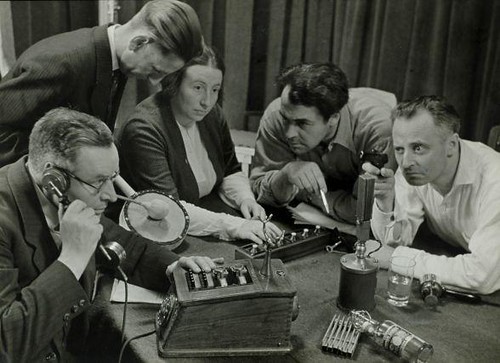Kleenmaid Appliances, an Australia whitegoods retailer went into voluntary administration on April 9 with an estimated debt of $73 million.
To provide Kleenmaid customers with an update on what this meant, the directors, Bradley Young and Andrew Young, took the unusual step of broadcasting a message via YouTube.
View it here. I have linked rather than embedded it because embedding permissions have been turned off.
As well, comments and response videos have also been turned off. What this says to me is that Kleenmaid had the best intentions for using YouTube as an engaging medium in what must be quite a stressful time. But the stress may have been too much, by turning off all forms of two-way communication this has meant people have circumvented this non-communication by other means.
Here are the examples to be found on YouTube today:
Yes, YouTube is full of weird and wonderful people, but like any other new media/social media platform, an inherent part of its purpose is to facilitate two-way communication. As seen in this example, people will call you out when you "don't play by the rules". And yes, going into voluntary administration must be stressful enough without having to respond to all the people of the interwebs. But if you choose YouTube as a form of communication then you should obey the etiquette and its reason for being.
Take for example GE. GE is a global manufacturing and financial services organisation that no doubt angers many people for various reasons. However, though its communications arm it has bitten the bullet and agreed to allow customers, shareholders and the public to comment on everything from its products to its financial performance through its GE Reports website and YouTube channel.
The worst that can happen is that you get a bad comment which, if defamatory, you can moderate. The best that can happen is that you can control the debate via responding to comments and centralising the debate.
Savvy businesses are realising that YouTube and two-way communications platforms are providing a whole new level of engagement with their customers and shareholders. By using these platforms to craft and moderate the debate much of the fire that comes out at retail outlets or shareholder meetings can be abated.
And on a final note out of all the saga of Kleenmaid and its stuttering foray into YouTube, here is my pick for the winner. Amos, a Kleenmaid technician from Adelaide that has had the foresight to respond to one of the negative Kleenmaid spoofs. Well done!
Wednesday, April 22, 2009
Friday, April 17, 2009
livestreaming around the world baby!
The below Windows Media Player and code is from a trial live stream I conducted. We live streamed from a notebook to my blog using Netromedia. Much coolness. Should you ever need to live stream yourself into your blog.
standby="Loading Microsoft Windows Media Player components..." type="application/x-oleobject"
width="382" height="306">
src="http://wms141.netromedia.net/cpatest" showcontrols="false" width="382" height="306"
filename="http://wms141.netromedia.net/cpatest" animationatstart="true" transparentatstart="true"
autostart="true">
standby="Loading Microsoft Windows Media Player components..." type="application/x-oleobject"
width="382" height="306">
src="http://wms141.netromedia.net/cpatest" showcontrols="false" width="382" height="306"
filename="http://wms141.netromedia.net/cpatest" animationatstart="true" transparentatstart="true"
autostart="true">
Wednesday, April 8, 2009
How to choose the delivery format and channel for your news and information

These past few weeks I've been thinking a lot about online media. Actually, more like learning and online media.
I'm going to take it back a step and start on a tangent with long-players and short-players, the old dames of the music industry. You might remember the initials, LP, EP, SP; they denoted the length of the music.
That's where I'm taking my cue from when, now in the 21st Century, I think about not so much music, but news and learning media. You can break down news and learning (learning being podcasts, lectures, etc) media into the LP, EP, SP definitions by time, so that a 40min lecture is an LP; a 20min podcast is an EP; and a 5min news clip is an SP.
The LP,EP,SP analogy can be seen as blocks of concentration too. I might only have time for a short news clip or I might be on a train ride and have time for a whole lecture.
Back in the ol' 45 era you didn't have much of an option for media. You had the transistor for the news or the record player for the LP. The Internet has changed all that. using an iPhone as an example the one device can deliver you short-play and long-play audio and video.
The trouble is that this abundance of choice from the one device means that the content publishers need to think carefully about the manner in which they deliver their content. Delivering the right content but through the wrong channel might mean that your content never gets seen. Likewise delivering the right content in the right channel but in the wrong format could also be disastrous.
Just to give an example of the variety of channels for delivering your content here is a small selection:
SP media
Short bites of information, high volume and frequency.
YouTube
EP media
mid-length media, once-a-week volume as example
The Podcast Network
LP media
Full length lectures, keynote presentations, etc.
iTunes University
That's just the tip of the iceberg my friends. Take your pick. It's a consumer's market out there.
So when you're a content publisher where do you start? How do you pick the winner for the content you want to put out there to the world? I'm still learning myself, but what I have learnt is that there are a few key factors that will determine your choice:
Length
Choose the length of your content delivery based on a consumer's appetite for knowledge of the topic.
Medium
Audio or video, choose based on what's required. There's nothing more frustrating than an podcast that refers to images or slides, similarly, a video of a guy standing behind a podium is pretty dull.
Frequency
News topics require constant periodic updates while specialist topics can have infrequent updates.
Streaming or download
You must accept that LP media will frequently be consumed over a number of sittings, therefore you should allow for downloading of this media, while SP media can be seen as disposable media and therefore streaming only is fine.
Delivery channel
This is totally subjective, but to me YouTube is a SP delivery channel, as it is streaming only I will only choose to watch SP media via YouTube. Whereas something like iTunes and iTunes University is an EP/LP delivery channel as it is a download channel.
The consumer is spoilt for choice, the information age has truly arrived, as a publisher your voice is fighting amongst the cacophony of the whole world. Choose your format and channel wiseley!
Subscribe to:
Posts (Atom)
